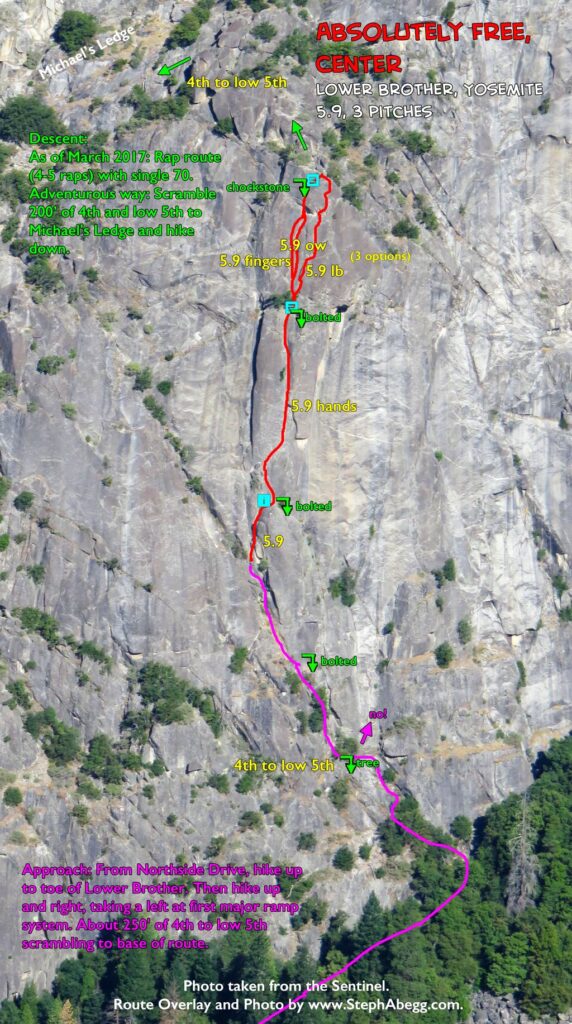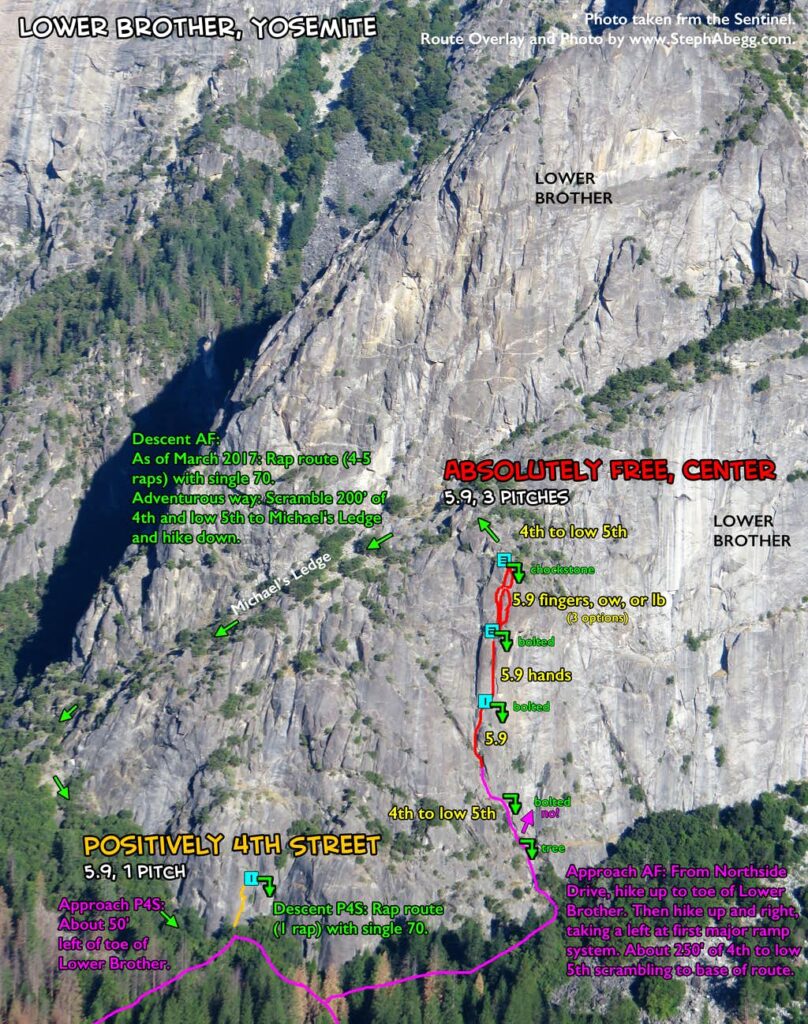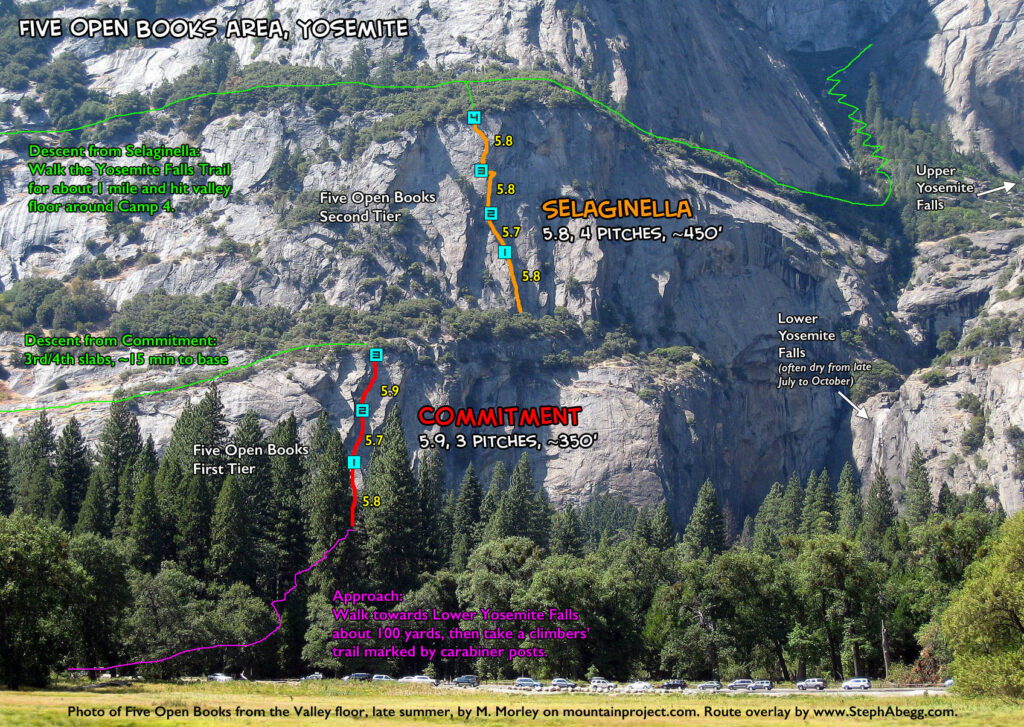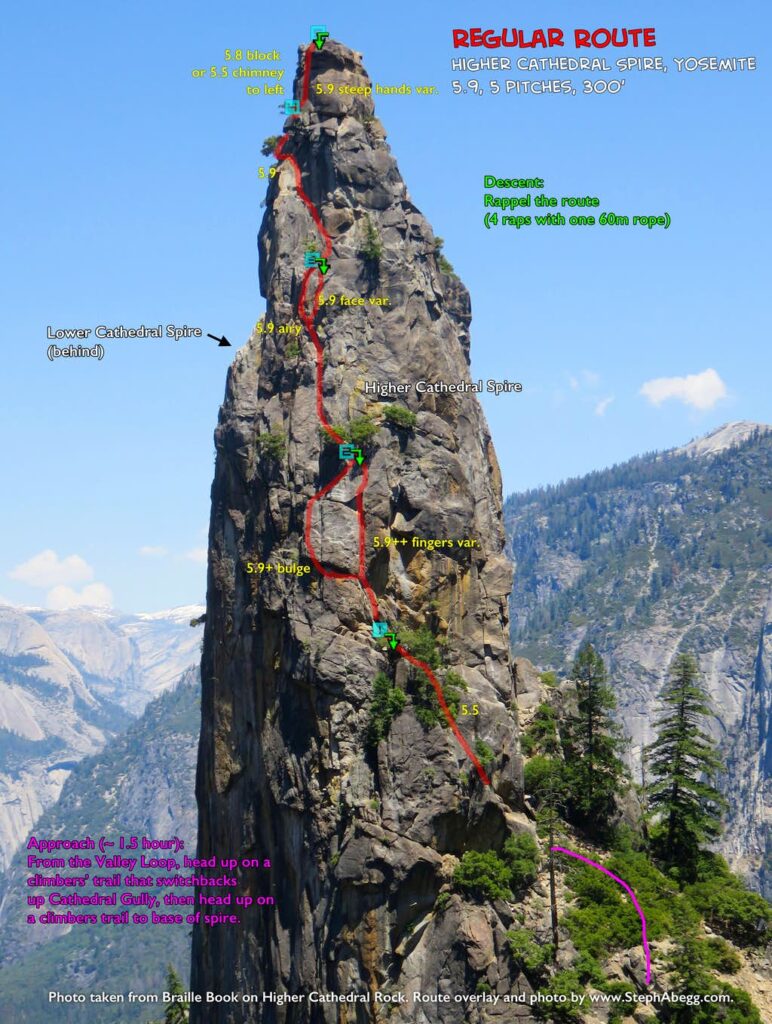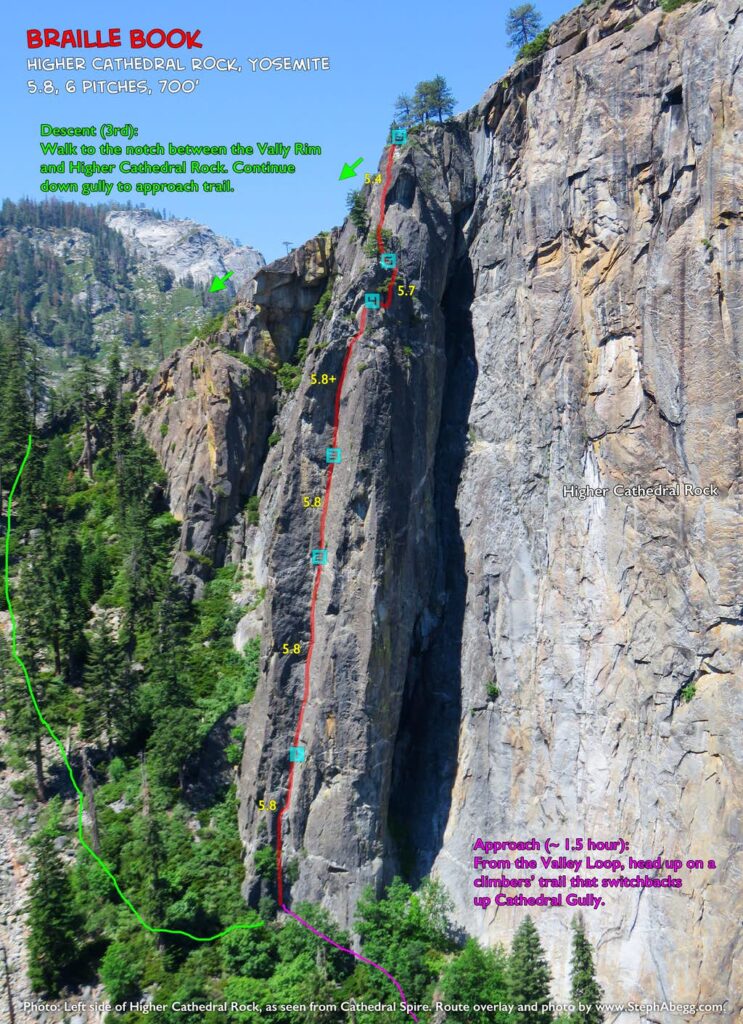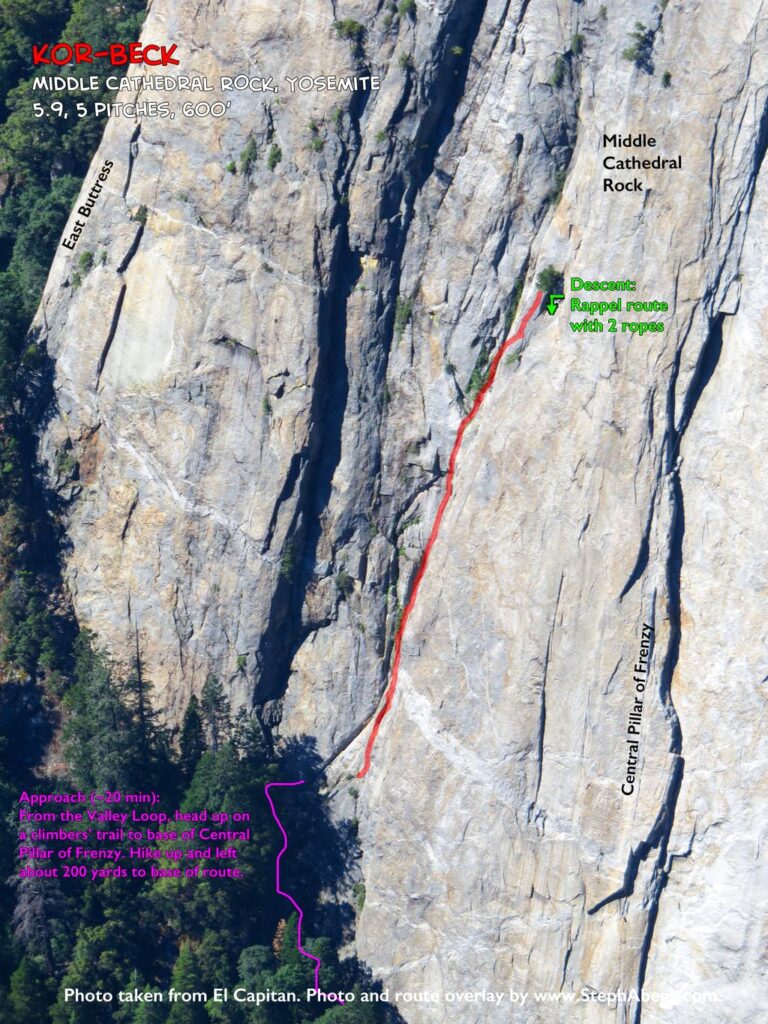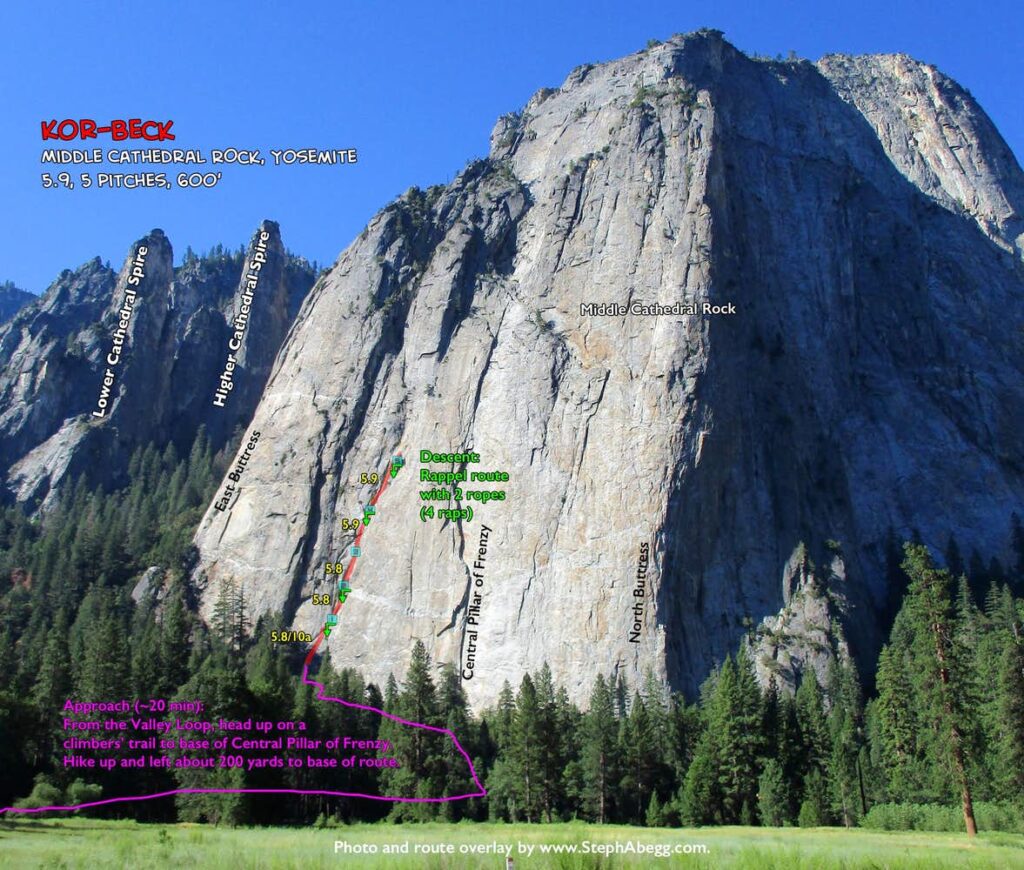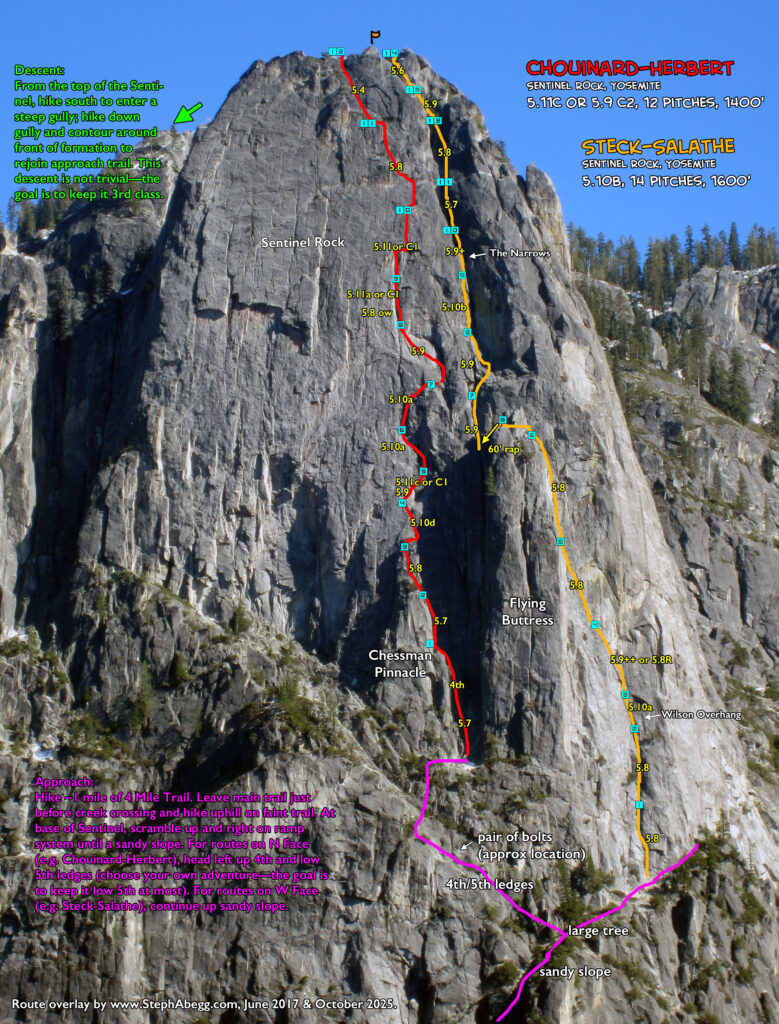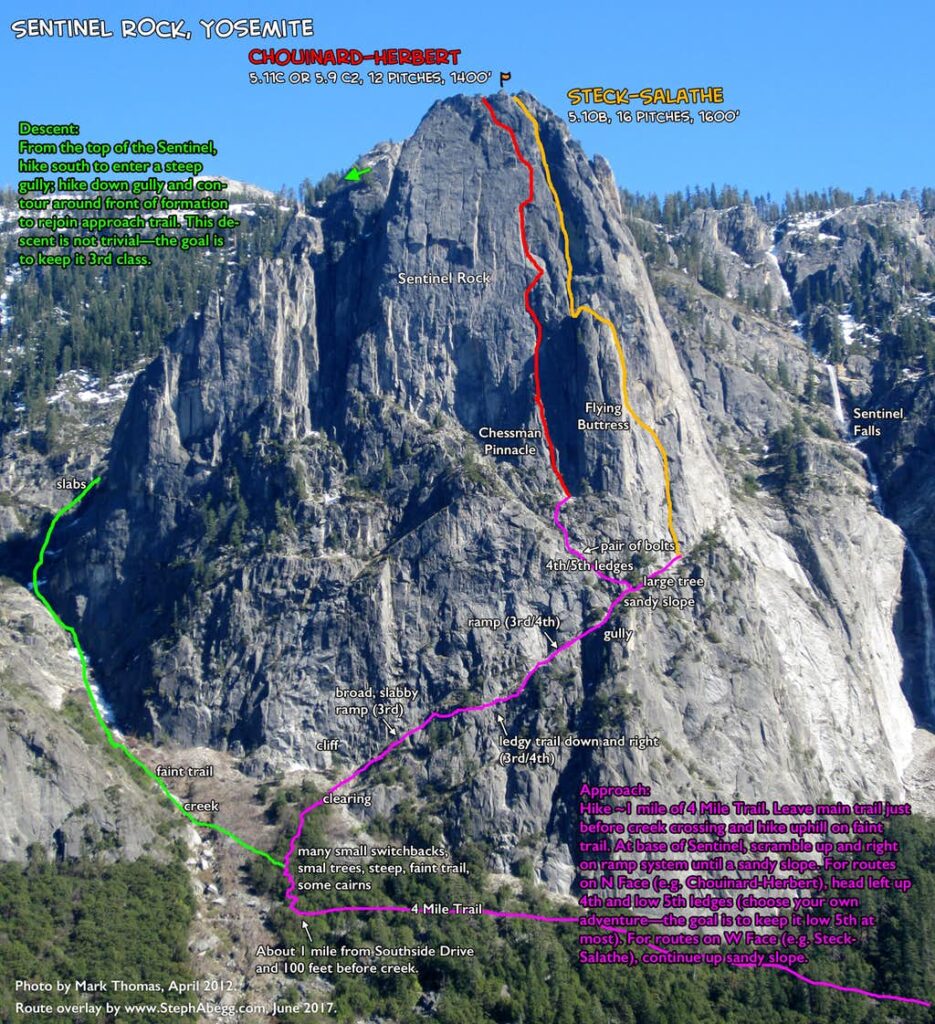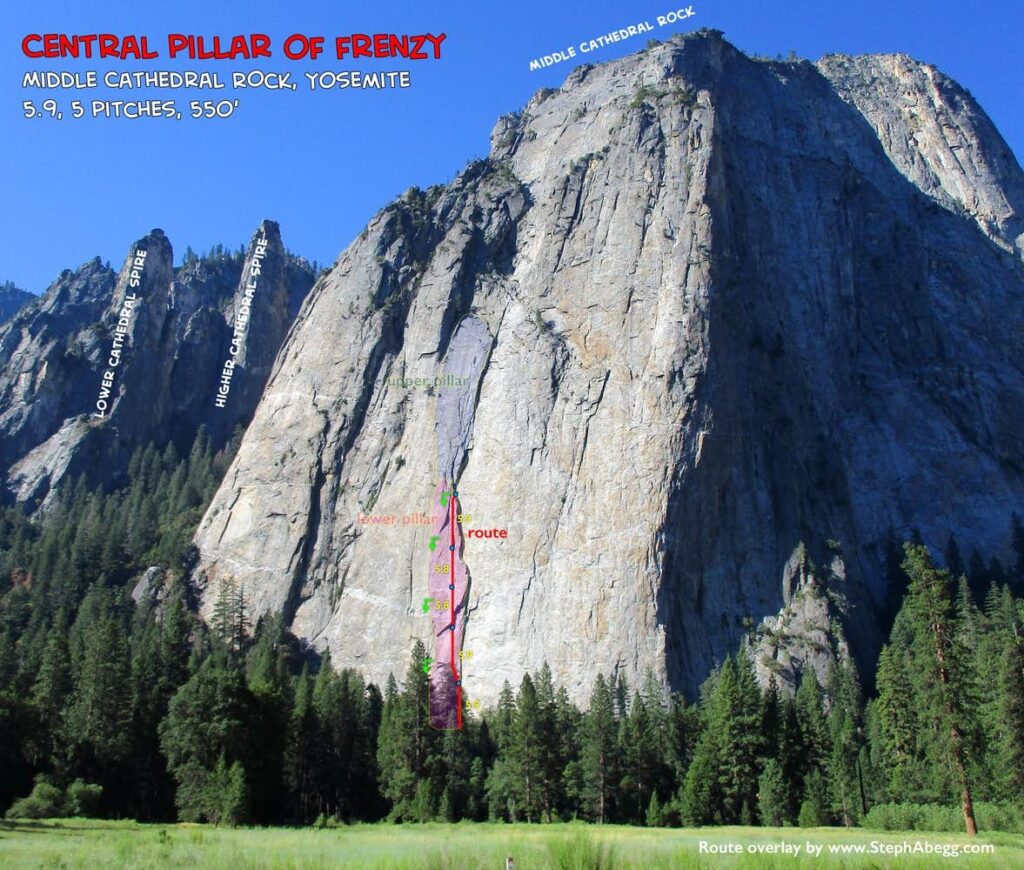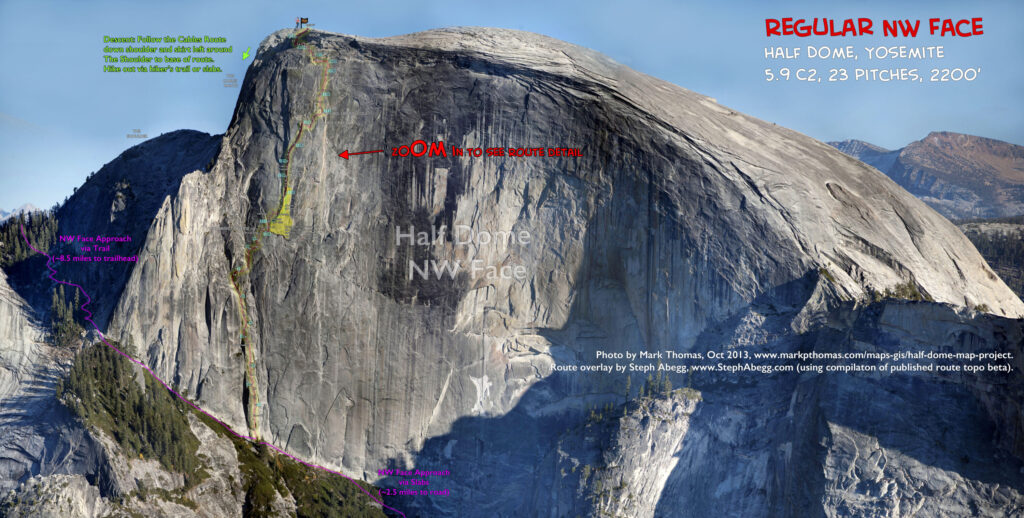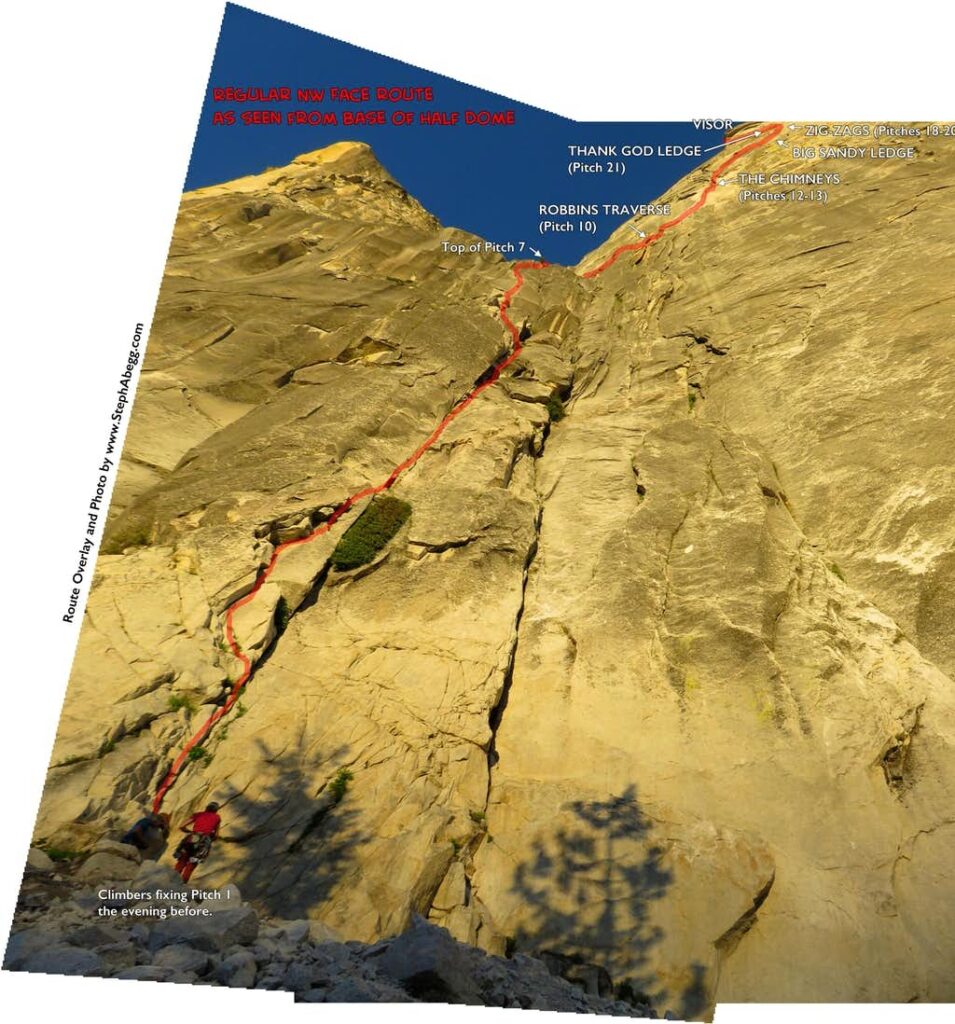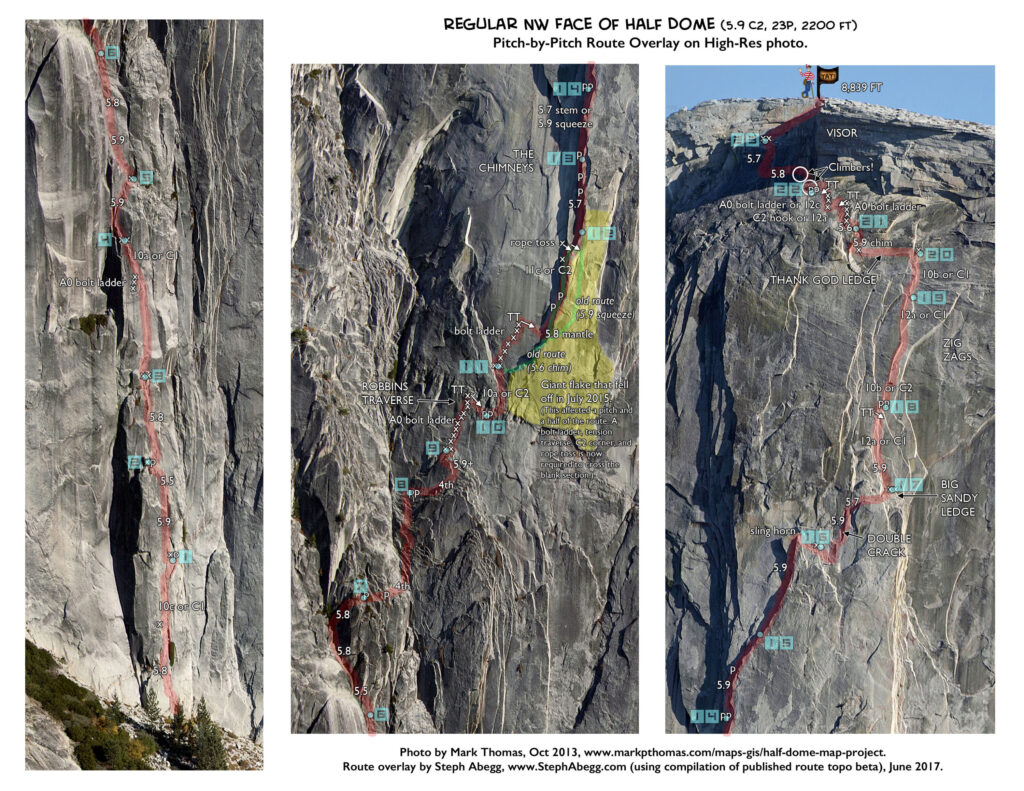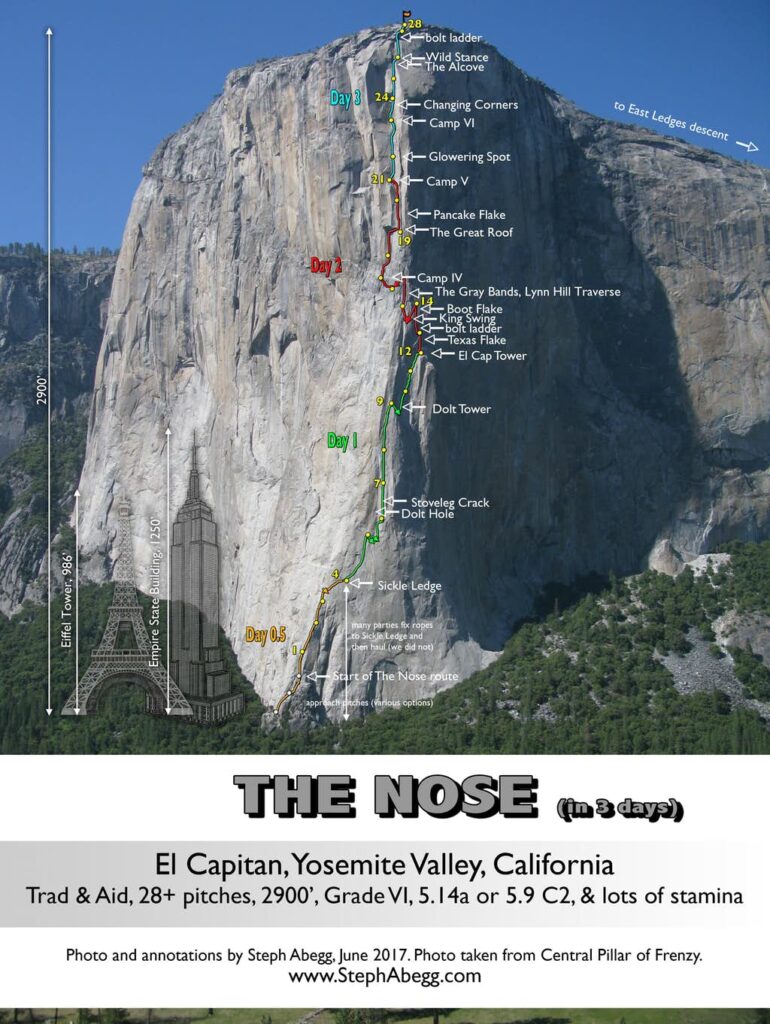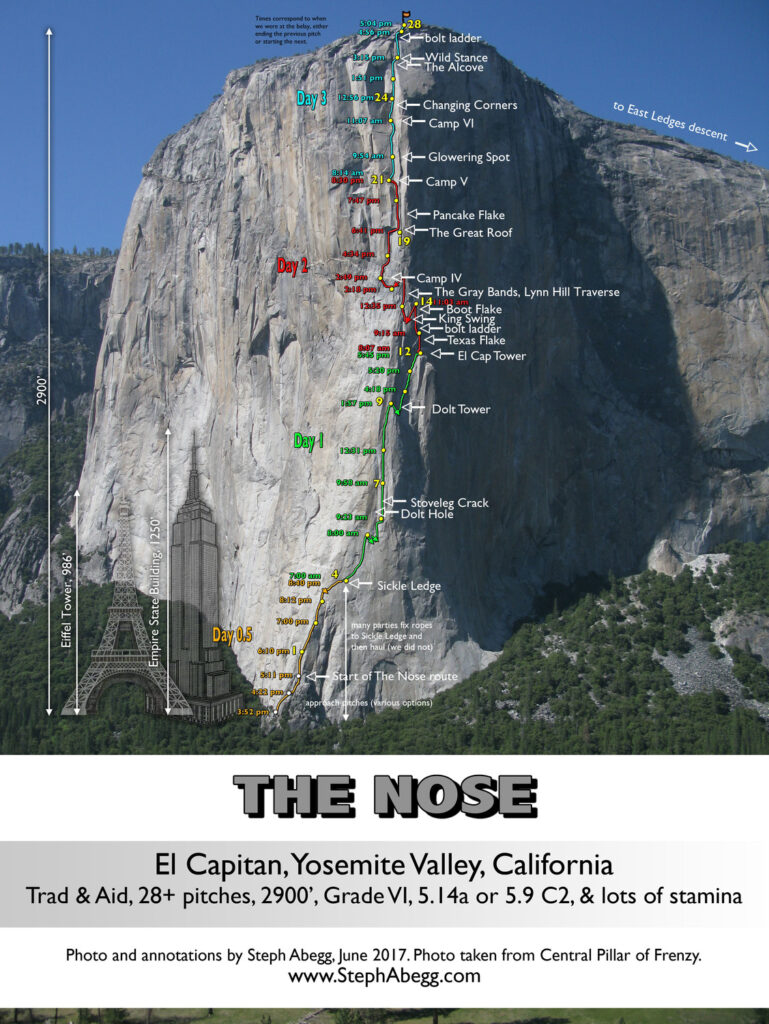This trip to Yosemite was the best yet. I climbed ten awesome climbs over the course of a couple of weeks. The trip started with a 3-day ascent of
The Nose on El Capitan (5.9 C2 of 5.14a, 28+ pitches, 2900') with my friend from Washington John Plotz. This was an amazing climb. I am already making plans to do it again next summer, hopefully in a day at some point. (My trip report for The Nose is actually on a separate page, accessed by the above link.)
A couple of days after
The Nose, I was antsy to climb again, despite the rising temperatures in the Valley. Drew from Utah responded to my mountainproject post and we had a fun (albeit hot!) morning climbing
Absolutely Free, Center (5.9, 3 pitches, 400') & Positively 4th Street (5.9, 1 pitch, 150') on Lower Brother. These are short climbs, but a bit off the beaten track and feature some splitter 5.9 cracks.
My friend James from Washington had never been to the Valley, and when he heard I was there looking for partners, he decided to fly down and climb a few days with me. The first two days we climbed two nice link-ups of popular moderate climbs: On the first day,
Commitment + Selaginella on Five Open Books (5.9, 7 pitches, 800'), which offered fun but not-too-challenging climbing and a great position above the Lower Yosemite Falls; and on the second day,
Regular Route on Higher Cathedral Spire (5.9, 5 pitches, 300'), and
Braille Book on Higher Cathedral Rock (5.8+, 6 pitches, 700'), two Yosemite classics with great position and exposure (I had climbed both of these routes before—
Braille Book in
2005 and
Regular Route in
2007—but thought that the link-up of these two routes would be a good day out). We had planned on climbing "something harder/bigger" the third day, but James dropped a climbing shoe into the chimney on
Braille Book so instead we enjoyed the river and the valley floor and hiked under the base of El Cap. I felt badly that James had lost a shoe and a day of climbing, but I had a blast climbing with him and hope he got enough of a taste of the Valley to need to come back!
After James left, I had a free day, so I checked the Camp 4 message boards and found Lochie from Massachusetts. Lochie and I spent a morning of
Cragging at El Capitan Base (
La Cosita Left, La Cosita Right, Sacherer Cracker, Moby Dick), until the sun hit the southwest face and it got too hot to climb. Even at the base, the rock on El Capitan is just so excellent and the cracks so splitter.
The next day, my friend Sam from Oregon arrived—we had long-standing plans to climb in Yosemite the last week of June; and like James, Sam had also not climbed in Yosemite before. The first day we climbed
Kor-Beck on Middle Cathedral (5.9, 5 pitches, 600'), a nice Yosemite-flavor 5.9 to start off Sam's trip. The second day we decided to go for something big while we were fresh, so we climbed
Chouinard-Herbert on Sentinel (5.11c or 5.9 C2, 12 pitches, 1400'); I personally felt the route had mostly so-so climbing with a few really good pitches, but not really enough to make up for the grungy approach and burly descent, but at least it was a nice athletic day with a spectacular position. The third day we took the morning off, but in the afternoon climbed
Central Pillar of Frenzy on Middle Cathedral Rock (5.9, 5 pitches, 550'), where Sam finally got a taste for what 5-star Yosemite climbing can be like (this was my third time climbing this awesome route—I had climbed it in 2007 and 2015). Then for the grand finale of our trip: Half Dome. (I had also climbed this route in a day in 2007, but had always wanted to climb it again, and would happily climb it a third time, and a fourth time, ....) We spent a day packing, getting a permit, and hiking the Slabs to below the NW Face of Half Dome, where we established our bivy at the base of the route with the 2200 foot vertical wall towering above us. The next day we climbed the
Regular NW Face on Half Dome (5.9 C2, 23 pitches, 2200'). Apart from the bolt ladders and Zig Zags, we both free climbed the route, swinging leads for the most part, with Sam taking more of the aid pitches, some of which involved a bit of trickery (awesome job Sam). We got back to camp pretty late, so we hiked out the next morning. I had a blast climbing with Sam and imagine this first climbing trip to Yosemite is the first of many to come for him!
The following page gives some photos from these ten climbs in Yosemite Valley. I'll be back for more. Again and again.

